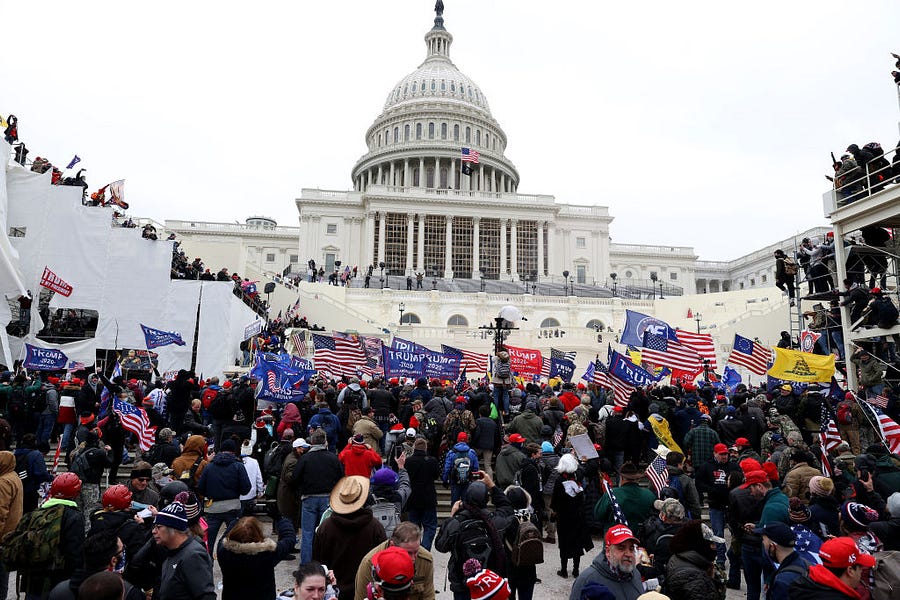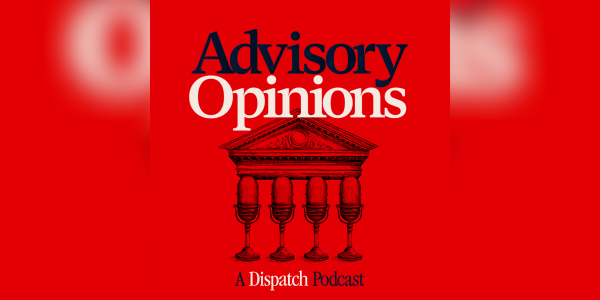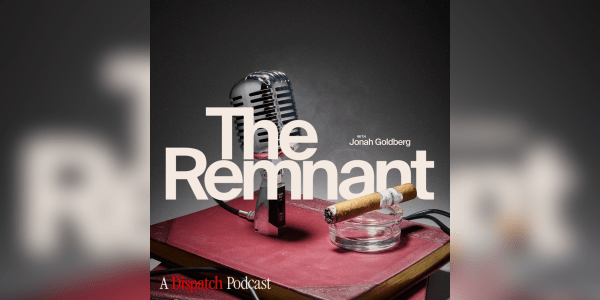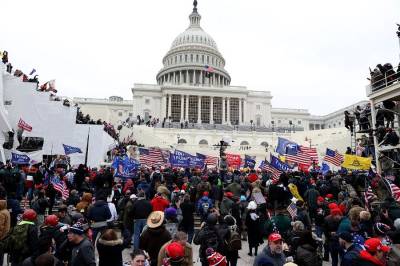The storming of the United States Capitol on January 6, 2021, was akin to what medical professionals call a “sentinel event:” something unexpected involving serious injury to or death of a patient. Such events offer warnings about systemic problems that could lead to future crises. In response, doctors undertake a “root cause analysis” to prevent future events.
For the last 11 months, the House Select Committee to Investigate the January 6th Attack on the United States Capitol has been performing its own root cause analysis, piecing together the story of what happened—before, during, and after the attack itself—and why. Over the next two weeks, the committee will present the findings of its investigation for the first time. The first of six hearings is Thursday at 8 p.m. eastern. The nine committee members and their staff, including professional prosecutors serving as investigative counsel, will present new evidence and hear witness testimony related to the events on and surrounding January 6.
On Tuesday, the committee said that witnesses for the first hearing will include Caroline Edwards, a Capitol Police officer who was “the first law enforcement officer injured by rioters storming the Capitol grounds,” and Nick Quested, a British documentarian whose camera was rolling during “the first moments of violence against U.S. Capitol Police, and the chaos that ensued.”
The committee has been a lightning rod for partisan controversy since its inception last July, after a proposed bipartisan commission to investigate January 6 passed the House but failed to overcome a Republican filibuster in the Senate. Only two Republican representatives—Liz Cheney and Adam Kinzinger—voted for the resolution creating the House committee.
“I wish that we had had the bipartisan commission that unfortunately, the Republicans in the House and then the Republicans in the Senate killed, and I think that’s a really important point,” Cheney said in a Dispatch Live event Tuesday night. “But once that bipartisan commission had been rejected by my party, by the Republicans, the question became, are you going to investigate, or are you simply going to say, you know, ‘too bad, we’re gonna throw our hands up and walk away?’ And I don’t think that there’s any way that we could have said we’re gonna throw our hands up and walk away.”
Cheney and Kinzinger were both later appointed to the committee, and Cheney serves as vice chair. The overwhelming majority of House Republicans, however, claim the committee has undertaken a partisan witch hunt, and the Republican National Committee censured Cheney and Kinzinger for their involvement earlier this year in a document that described the events of January 6 as “legitimate political discourse.” Meanwhile, some Democrats have leveraged the investigation to promote partisan talking points as well. Democratic committee member Jamie Raskin of Maryland reportedly wants the legislative recommendations in the final report to include abolishing the Electoral College—a popular idea among the Democratic base but that could not command the unanimous support of the committee, let alone pass through both chambers of Congress.
Because of the “witch hunt” framing and partisan bickering, many Republicans are likely to continue to ignore or downplay the committee’s investigation, while some Americans shrug off the hearings as a rehashing of things we already know. But the committee’s investigation should shed new light on the day a mob stormed the U.S. Capitol and the preceding weeks as then-president Donald Trump and his inner circle agitated his supporters to overthrow a presidential election. Here’s the context to keep in mind as hearings begin.
First, the scope of the investigation extends beyond the storming of the Capitol itself. The basic events of January 6 have been clear since they occurred. But several important questions remain, especially regarding the degree to which Trump and his allies and supporters, including groups like the Proud Boys, prepared in advance to disrupt the peaceful transfer of power. While the committee’s internal deliberations have been kept secret, its work has been divided into five color-coded groups, at least on paper. Even if the hearings and report don’t follow this exact pattern, the five color groups give a good sense of the breadth of the investigation:
Gold. This part of the investigation examines the efforts by Trump and some in his inner circle to pressure federal, state, and local officials to overturn election results.
We already know that Trump and allies such as John Eastman pressured Vice President Mike Pence to stop or delay the certification of the electoral votes taking place in the Capitol on January 6, and Trump is said to have approved of calls from the mob to “hang Mike Pence” when the vice president refused to go along with the plan. In March, a federal judge found that Trump and Eastman’s pressure on Pence may have been criminal. Conservative former federal judge Michael Luttig, who argued that “the Constitution does not empower the Vice President to alter in any way the votes that have been cast,” is expected to testify in the hearings.
Trump also pressured federal officials within the Department of Justice as well as state officials such as Georgia Secretary of State Brad Raffensperger. In seven states—including Georgia—some Republicans presented “alternate” slates of electors. The extent of Trump’s personal knowledge of and involvement in that effort is unclear, though some of his campaign staff were involved. White House Chief of Staff Mark Meadows received dozens of text messages, including from members of Congress, encouraging strategic efforts to overturn the election, including alternate electors or intervention by Pence.
Blue. This part of the investigation examines law enforcement and intelligence failures. The FBI and the Capitol Police both had intelligence about potential violence but were unprepared on the day of the attack. Acting Defense Secretary Christopher Miller and Chairman of the Joint Chiefs of Staff Mark Milley also expressed grave concern about the prospects of violence and the potential for Trump to invoke the Insurrection Act, which enables the president under certain circumstances to “deploy regular military and National Guard forces to suppress domestic unrest,” according to a Brookings Institution reference sheet. Miller’s fear was that Trump might “politicize the military in an anti-democratic manner.”
Purple. This part of the investigation focuses on domestic extremist groups including the Proud Boys, the Oath Keepers, the Three Percenters, and believers in the QAnon conspiracy theory. The Proud Boys and the Oath Keepers both have close ties to longtime Trump adviser Roger Stone, and members of both groups have been indicted for seditious conspiracy in connection with January 6. The New York Times reported this week that the rioter who assaulted Capitol Police officer Caroline Edwards “had been in a conversation moments earlier with one of the Proud Boys indicted on the sedition charge.” The report also noted that the Proud Boys were filmed by Nick Quested on January 6.
Red. This part of the investigation looks at the “Stop the Steal” movement and the January 6 rally at the Ellipse in Washington immediately preceding the riot. Stone looms large over the Stop the Steal movement, having originally coined the phrase before the 2016 election.
Green. This prong of the investigation examines the fundraising and financing behind the other prongs, likely including the Stop the Steal effort and an “Election Defense Fund” drawn from small-dollar donors.
In addition to being broad in scope, the committee’s investigation is distinct from, but also overlaps with, an ongoing investigation by the Department of Justice. Many of the same people and events are subjects of both investigations—and the DOJ has asked the House committee for access to transcripts of depositions and interviews it has conducted—but the House committee lacks the power that the DOJ has to actually prosecute people for crimes. House committee members have publicly commented on the DOJ’s investigation: Last Friday, the DOJ indicted former Trump adviser Peter Navarro on two counts of contempt of Congress but did not indict Mark Meadows or his former deputy Dan Scavino. Cheney and Democratic Rep. Bennie Thompson of Mississippi, the committee chair, said in a statement that “[w]hile today’s indictment of Peter Navarro was the correct decision by the Justice Department, we find the decision to reward Mark Meadows and Dan Scavino for their continued attack on the rule of law puzzling.”
The House committee is expected to release a final report with some legislative recommendations, but whether and how to act on those recommendations will be up to Congress—and such actions would need to happen sooner rather than later. If Republicans retake the House in November’s midterm elections, as they are expected to do, they will likely eliminate the January 6 committee or restructure it beyond recognition.






Please note that we at The Dispatch hold ourselves, our work, and our commenters to a higher standard than other places on the internet. We welcome comments that foster genuine debate or discussion—including comments critical of us or our work—but responses that include ad hominem attacks on fellow Dispatch members or are intended to stoke fear and anger may be moderated.
With your membership, you only have the ability to comment on The Morning Dispatch articles. Consider upgrading to join the conversation everywhere.